The ancient stones stand regally in the centre of a large urban park. Despite the loss of many stones, the anta seems proud to be enshrined in such a prominent spot in the community. Passing dog-walkers may pay no heed, resting or picnicking families may not take time to read the informative plaque, but the park has a focal spot, and the anta is it.
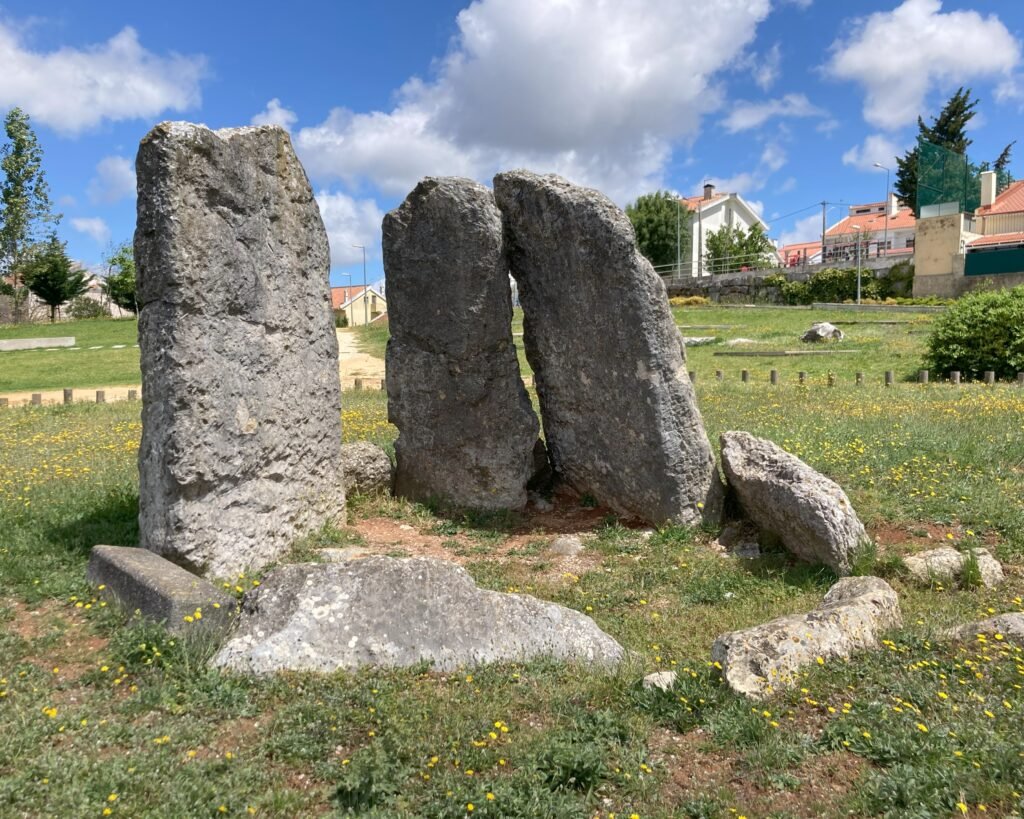
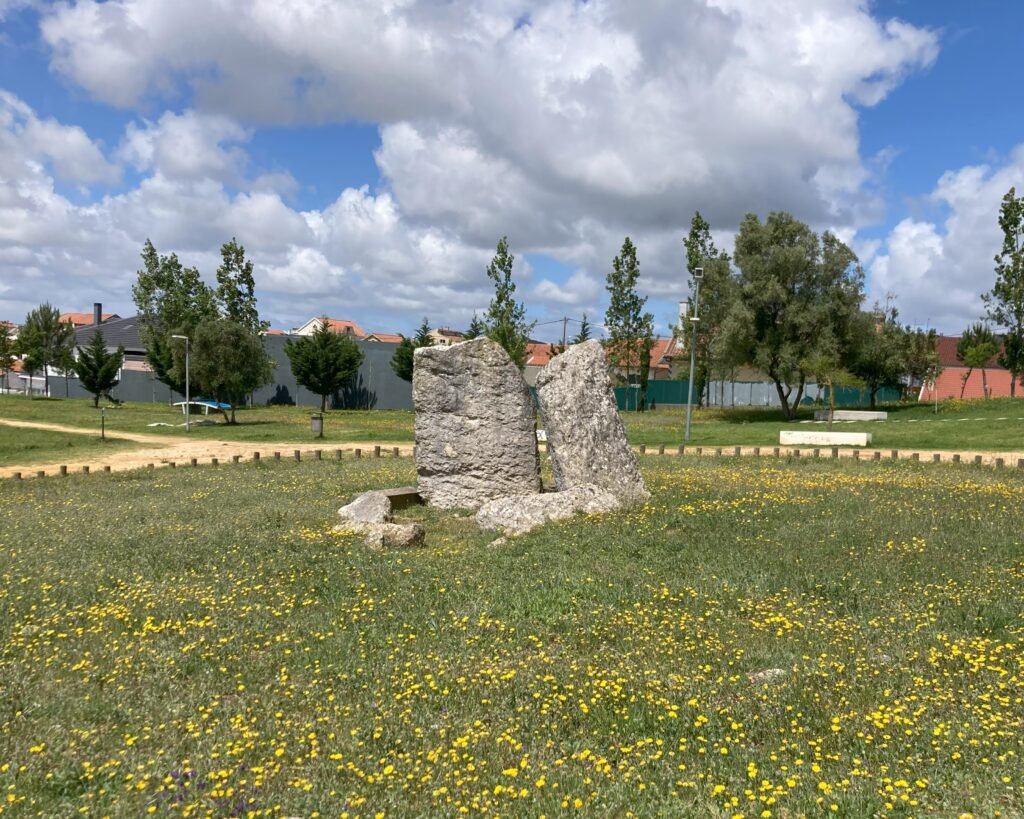
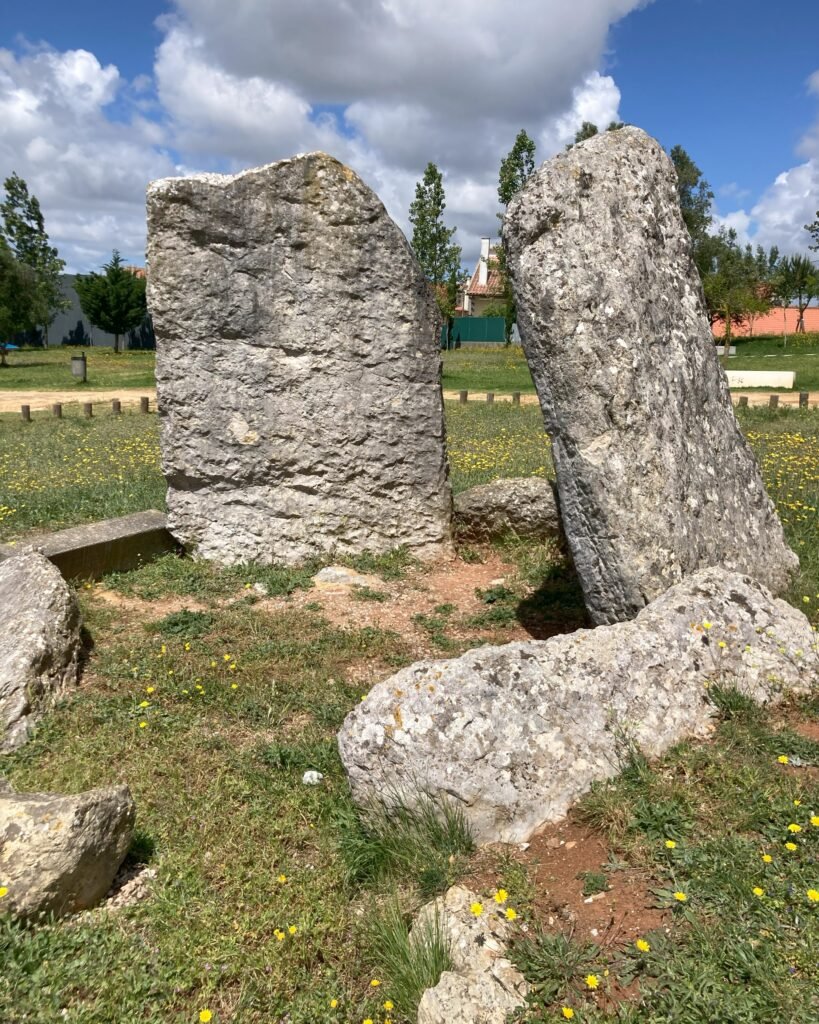
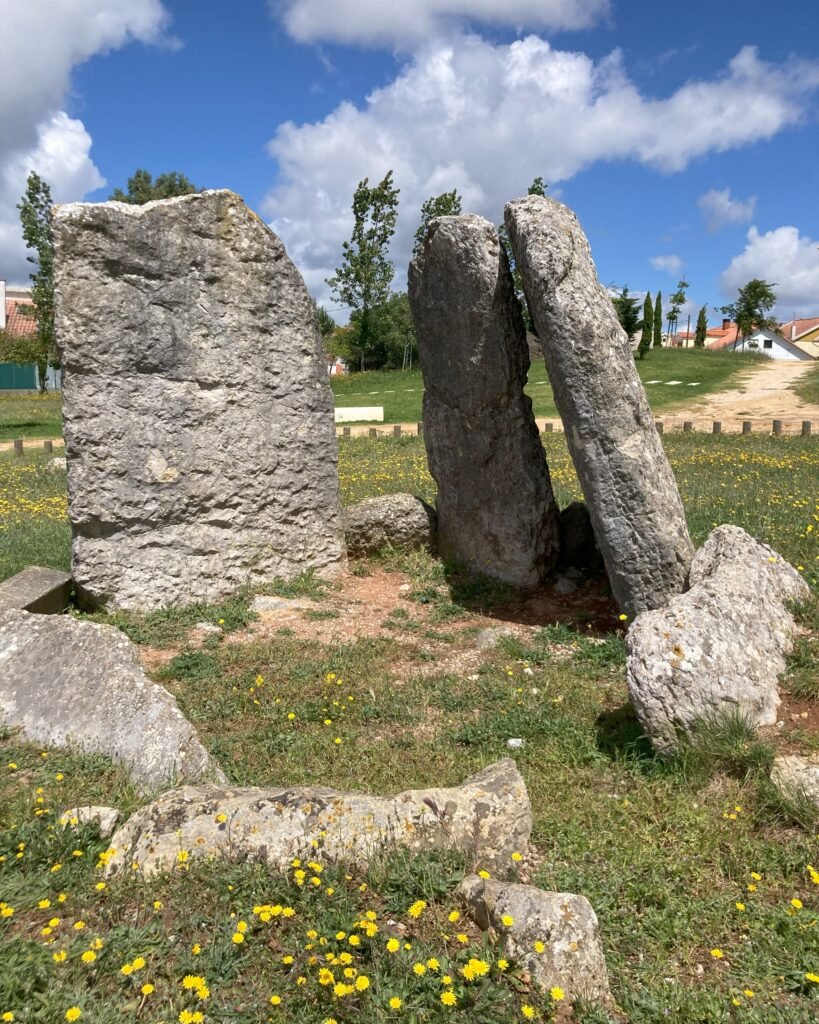
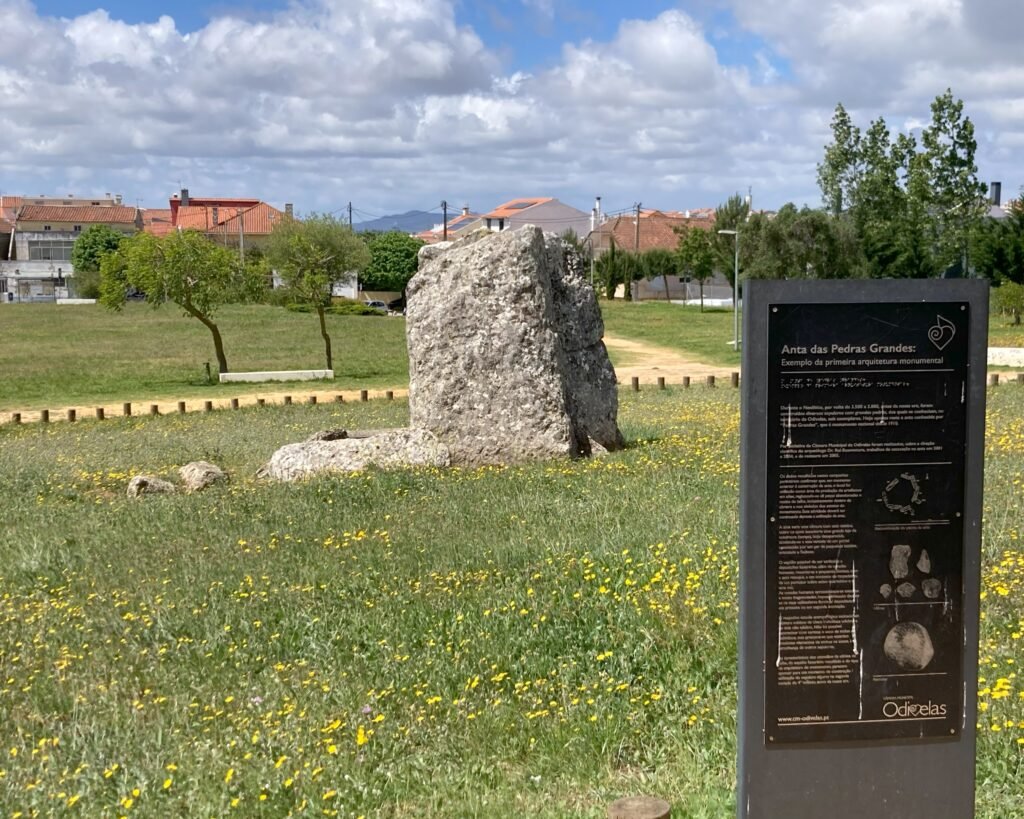

The anta, a National Monument since 1910, is the only surviving prehistoric tomb in the region, which is densely populated. It dates back to the 4th millennium BC and was first excavated in 1880. It was thoroughly renovated and re-excavated in 2005 and made the centre of this urban park. The central chamber originally had seven pillars, reaching about 3m high. The small access corridor was oriented southeast.
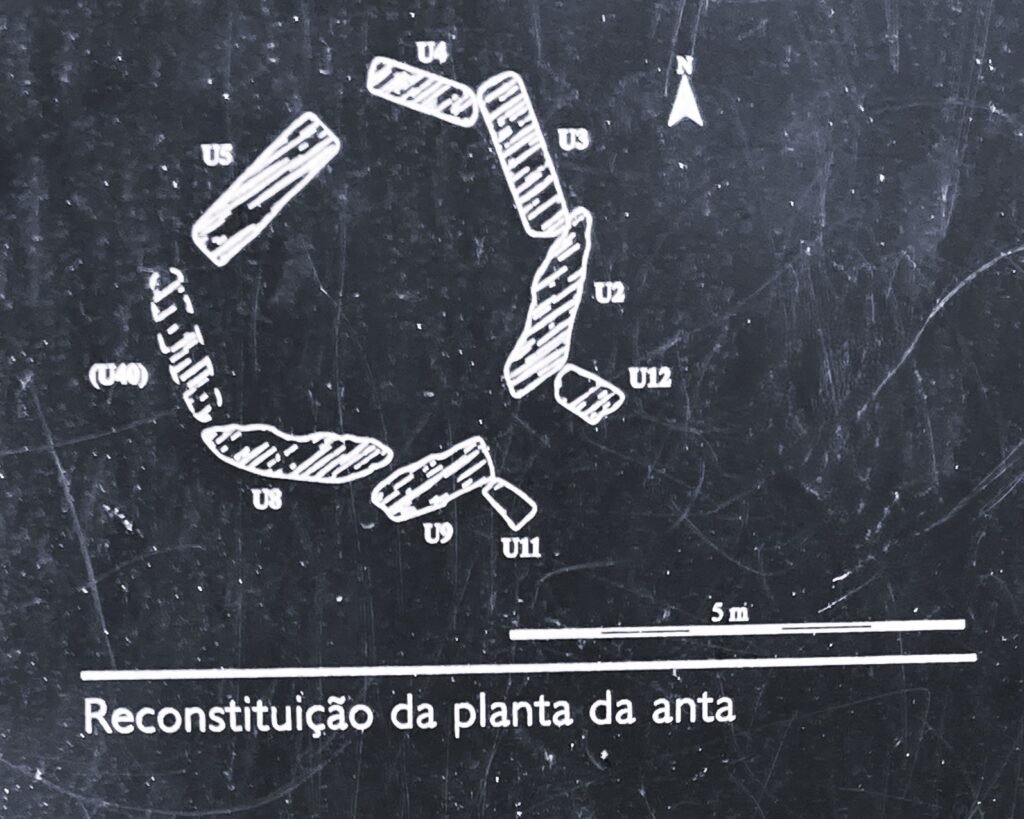
Location
The anta (dolmen) is located in Caneças (neighbourhood of Casal Novo), in the municipality of Odivelas, northwest of Lisbon.
Access
The anta is in the middle of a large urban park, with parking all around it. You can easily walk to the anta.
Signage
There are many signs in the area pointing you towards the park and the anta.

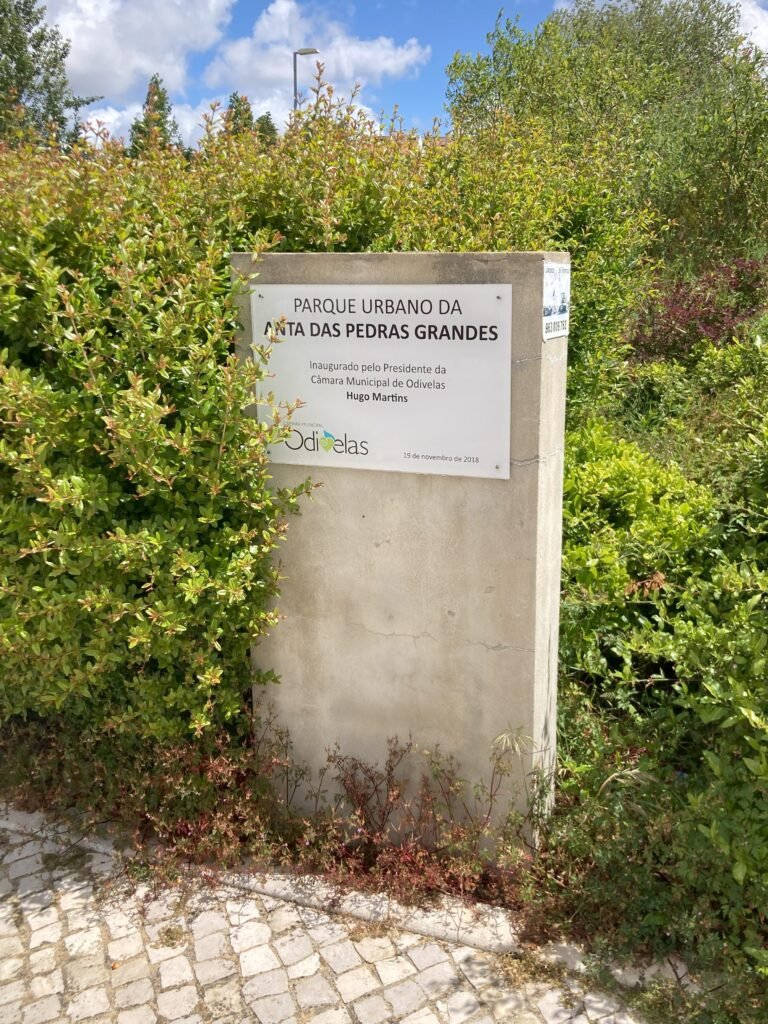
Links
- Entry (in English) from the Megalithic Portal
- Article (in English) from Wikipedia
- Description (in Portuguese) of the Megalithic Site by the Town Hall of Odivelas
- A video (in Portuguese with English subtitles) by À Descoberta de Portugal
- Description (in Portuguese) from Archaeological Portal of Directorate-General of Cultural Heritage
- Designation (in Portuguese) as a National Monument by the Director-General of Cultural Heritage
Nearby
There used to be other antas (dolmens) in the area, but they have not survived. The three Belas Antas are not far away (Estria, Monte Abraão, and Pedra das Mouros), and the Necrópole of Carenque is also nearby.
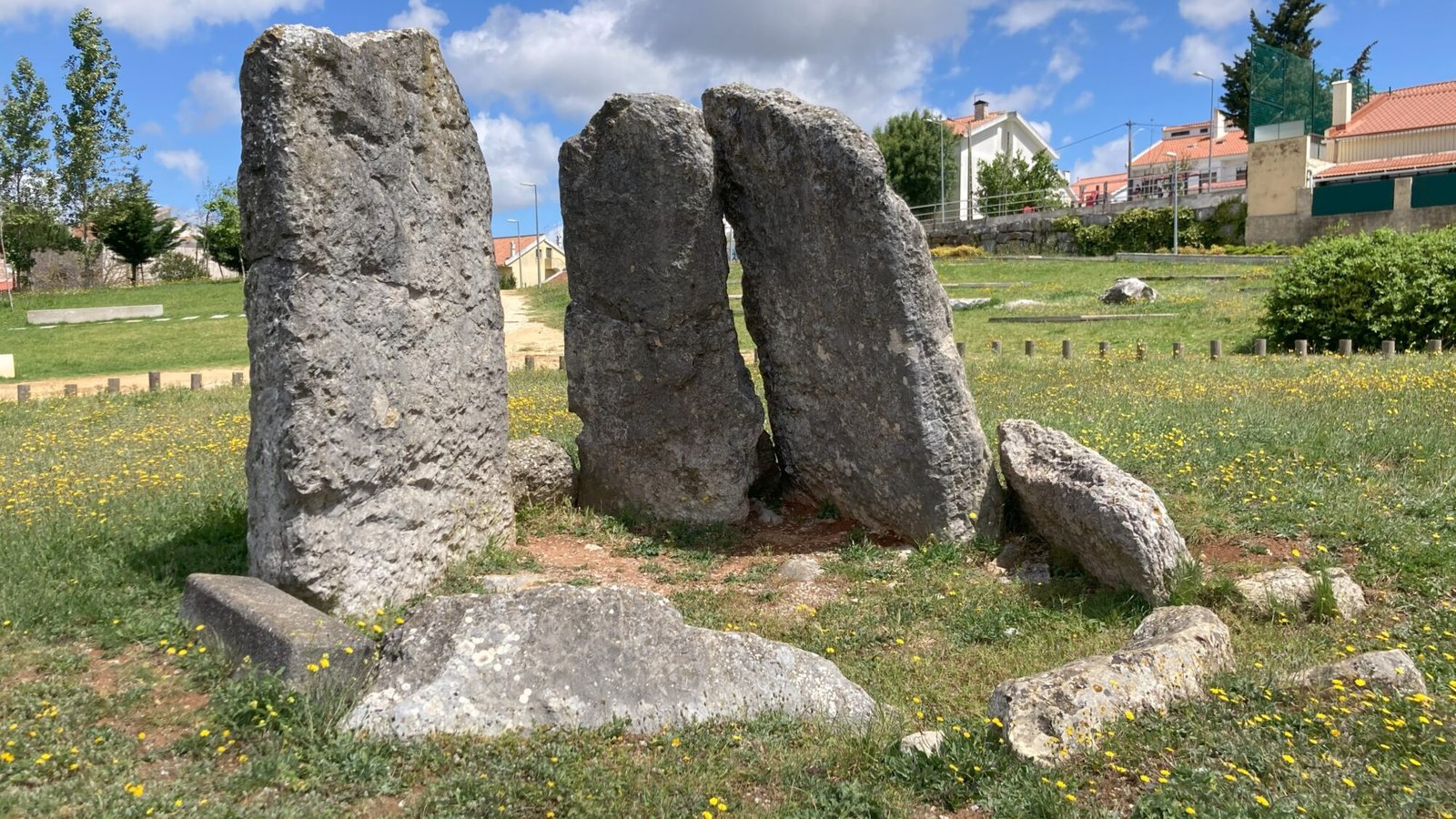
Pingback:Necrópole de Carenque - Prehistoric Portugal
Pingback:Dólmen de Monte Serves - Prehistoric Portugal